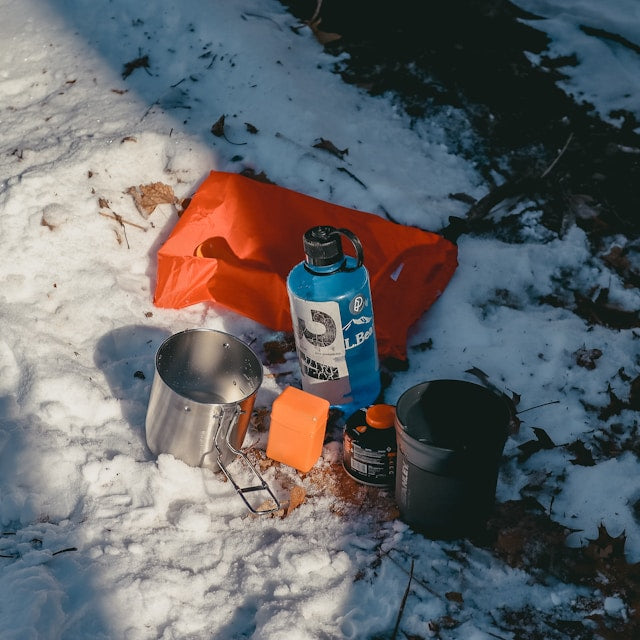Transform Your home
| Save $28
For Orders Over $699

Embarking on an adventure in the wild demands not only courage and skill but also the right equipment to navigate, survive, and thrive in the untamed wilderness. From shelter and sustenance to safety and navigation, the choices you make in outdoor gear can significantly impact your experience. Let's explore the essential equipment for surviving and living in the wild.
Choose a durable and weather-resistant tent suitable for the conditions you might encounter. Consider the tent's capacity, weight, and ease of setup. Backpacking tents are lightweight and compact for those on the move, while larger tents may be suitable for base camps.
Invest in a sleeping bag appropriate for the climate. Look for one with insulation that suits the expected temperature range. Pay attention to weight and packability for ease of transportation.
A sleeping pad provides insulation from the ground, enhancing comfort and warmth. Choose one that balances insulation, weight, and size. Inflatable pads are lightweight and compact, making them ideal for backpacking.
A reliable camping stove is essential for preparing meals. Options include compact backpacking stoves or larger models for base camps. Consider fuel efficiency and ease of use.
Lightweight and durable cookware, including pots, pans, and utensils, is crucial for outdoor cooking. Choose materials like titanium or aluminum for their strength-to-weight ratio.
Ensure access to clean water with a reliable water filtration system. Water filters or purifiers remove contaminants, providing safe drinking water. Additionally, carry a water bottle or hydration system for convenience.
Dress in layers to adapt to changing weather conditions. Include moisture-wicking base layers, insulating mid-layers, and waterproof outer layers. Choose clothing made from quick-drying materials.
Invest in sturdy, waterproof hiking boots that offer ankle support. The right footwear is crucial for traversing varied terrain and preventing injuries.
Pack weather-appropriate accessories such as a hat for sun protection, gloves for warmth, and a rain jacket for wet conditions. Sunglasses with UV protection are essential, especially in snow-covered environments.
Carry detailed maps of the area you'll be exploring and a reliable compass for navigation. Familiarize yourself with map reading and basic navigation skills.
A GPS device can be a valuable tool for precise navigation. Ensure it's fully charged and consider carrying backup batteries.
In case of emergencies, carry a communication device such as a satellite phone or a personal locator beacon (PLB). Check for coverage in your specific location.
Assemble a comprehensive first aid kit tailored to outdoor injuries. Include items like bandages, antiseptic wipes, pain relievers, and any necessary prescription medications.
A multi-tool is versatile and can assist with various tasks, from fixing gear to preparing food. Choose one with essential functions like blades, pliers, and screwdrivers.
Ensure visibility during low-light conditions with a reliable headlamp or flashlight. Carry extra batteries, and consider a headlamp with a red-light mode to preserve night vision.
Pack waterproof matches, a lighter, and fire starter for essential warmth and cooking. Consider learning primitive fire-starting methods as a backup.
In addition to your tent, carry a lightweight emergency shelter, such as a bivy or space blanket, for unexpected situations.
Have signaling devices like a whistle or a signal mirror to attract attention in emergencies. Learn and practice distress signals.
Choose a backpack with sufficient capacity for your gear. Consider features like multiple compartments, hydration compatibility, and adjustable straps for comfort.
Keep critical items dry by using waterproof dry bags. These are especially important for protecting clothing, electronics, and sleeping gear.
Stay organized with gear like stuff sacks, packing cubes, or compression sacks. These help optimize space and keep your equipment easily accessible.
Adhere to Leave No Trace principles by minimizing your impact on the environment. Pack out all waste, follow established trails, and camp in designated areas.
Choose environmentally friendly camping products, including biodegradable soap, rechargeable batteries, and sustainable gear options.
Equip yourself with essential outdoor skills, including navigation, shelter-building, fire-starting, and basic first aid. Knowledge and competence are invaluable assets in the wild.
Maintain good physical fitness to handle the demands of outdoor activities. Conditioning and endurance contribute to a safer and more enjoyable experience.
Selecting the right outdoor equipment for surviving and living in the wild is a balance between preparedness and adaptability. Each piece of gear serves a purpose, contributing to your safety, comfort, and enjoyment of the natural world.
As you venture into the wilderness, the careful consideration of equipment, coupled with essential skills and knowledge, empowers you to embrace the challenges and beauty of outdoor living. Remember to continually refine your gear choices based on experience and evolving needs, ensuring that your adventures in the wild remain memorable, fulfilling, and, above all, safe.